I have shooting/safety glasses all over my house. I think there are several pairs in my car too. I never put much thought into them. Never much wondered about the best eye protection for shooting, as long as my eye pro was ANSI rated. I just made sure I had some when I needed it. Some of you may be the same, or maybe you’re actually squared away. I have one quality pair that rides in my range bag, but they are essentially ballistic-rated sunglasses. I like them, but they don’t do anything special beyond helping prevent eye injuries (which to be fair is pretty special by itself).
Revision I-Vis Lenses
William “Bucky” Lawson
Recently, however, I had the opportunity to try out Revision’s I-Vis lenses in their StingerHawk frames. I’ve been wearing them at the range, as well as other places, for a few months now (since SHOT Show 2023), and I am certainly impressed. These are not just glorified sunglasses. My son and range partner also wears a pair. Between us, the Revisions have many hours of use.
So, let’s look at what the Revision I-Vis lenses are and why we like them so much.
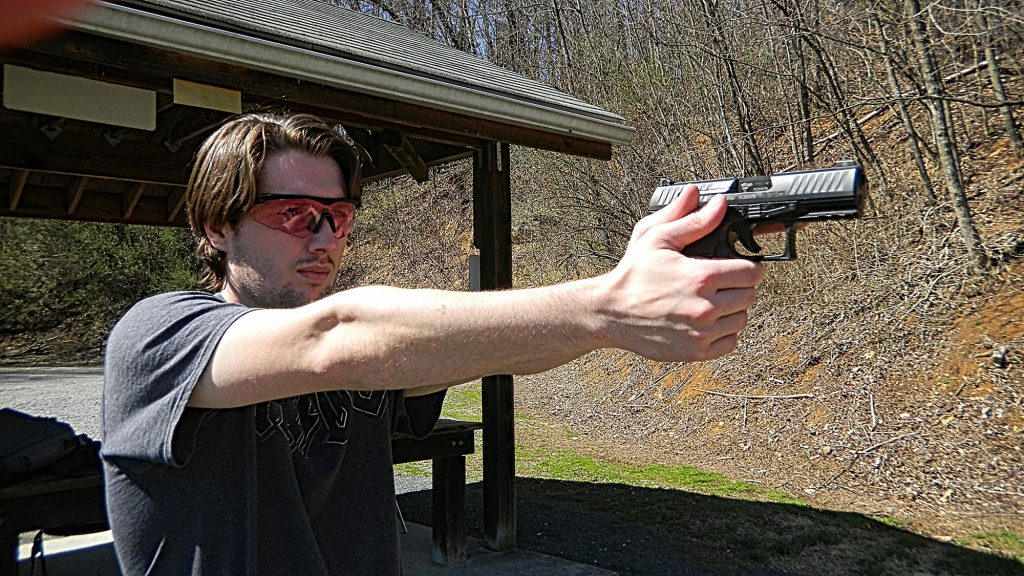
Revision I-Vis Technology
The I-Vis lenses are among the latest developments of Revision Military, one of the world’s foremost eyewear producers for militaries and law enforcement agencies (and civilians, too). Revision says they’re “the absolute best shooting glasses you’ll find this side of a sci-fi movie.” That may be true, considering that Revision used AI technology to discover the best lens tints to enhance color accuracy, reduced eye fatigue, increased depth perception, and greater visual detail.
This has been our experience as well. The colors just pop when we don the I-Vis glasses. We see color shades we didn’t know were there. The enhanced contrast brings out details we hadn’t previously noticed. As Revision CEO Amy Coyne notes, “I-Vis lenses increase the separation of colors so that when you’re wearing them, you’ll see multiple shades of a color compared to the single shade you’d see with the naked eye or when using traditional lens tints. The result is greater awareness and faster reaction times. In a military setting, this translates into greater survivability and lethality.”

The I-Vis lenses are made from optical grade polycarbonates for maximum protection from fragments and block 100 percent of harmful UV-A, B, and C rays. They are also scratch, streak, smear, and chemical resistant. The lenses also feature an anti-fog coating on the inside, which Revision’s tests show lasts 10 to 20 times longer than their competition’s anti-fog solutions. Specifically, the anti-fog industry standard is a minimum of 8 seconds at 50 degrees Celsius. Revision’s Ocumax coating lasts for 100 seconds at that temperature.
This is great stuff. And that’s just one reason I make the lofty “best eye protection for shooting” claim.
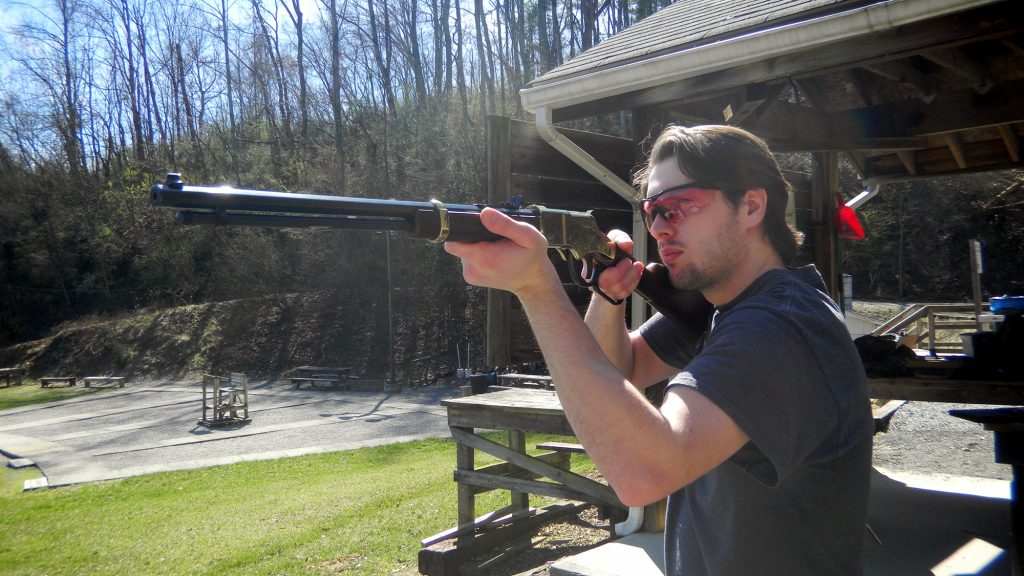
Lens Tints Tailored to Your Environment
The availability of “specialized” lenses is another reason I think I-Vis should be at the top of any list purporting to classify the best eye protection for shooting.
Revision’s I-Vis series is available in six tints, each optimized for a particular operating environment. That’s where the AI comes in. Revision used it to analyze satellite data gathered by the National Oceanic and Atmospheric Administration (NOAA), specifically area-specific color vision variables informed by the color palette of locations and the most likely lighting conditions for those locations.
This data resulted in mil-spec lenses designed to increase contrast and elevate color recognition in specific geographic regions. Those six optimized lens tints are summarized below. Each lens has a VLT percentage figure. Just in case you didn’t know, VLT stands for Visible Light Transmission.
Note: this does not mean you need all six of them. They have a general-use version (q.v.) that will work for everyone. But if you’re working in a specific environment and need the extra advantage, they’ve considered that. After all, the South Texas HIDTA region is more than a little different than the Bridger-Teton National Forest.
The higher the percentage, the more light the lenses allow. The lower the figure, the more light they block.
You may prefer a specific lens color for a specific task (including a clear lens for no or low light); purple lenses, bright yellow lenses, etc. Each of those has (or had) its place, but none of them, particularly a polarized lens, provide contrast without cutting out at least some wavelength of light.
- Verso: This is Revision’s most versatile, and complex, I-Vis lens tint. The Verso lenses are “designed to thrive in the widest range of environments and settings.” The Verso excels at separating colors, expanding the available color volume. Revision says this is the tint if you’re unsure of your mission profile. VLT: 19%.
- Aros: These lenses are designed for desert environments, bringing out differences in similar shades of brown, tan, yellow, and orange, while causing man-made structures and objects to stand out. VLT: 12%.
- Cano: The Cano lenses are optimized for environments dominated by greens, browns, and grays. VLT is maximized since operations will typically be conducted in densely forested areas shaded by the canopy. Man-made structures stand out, along with variances in the foreground landscape. VLT: 37%.
- Alto: These lenses are meant for dry, high-altitude settings with lats of grays, tans, and blues, as found in northern Afghanistan. The Alto enhances differences in prevalent landscape colors to aid in reading terrain and identify man-made structures, roads, and people. VLT: 12%.
- Clara: Optimized for use in northern Europe, Scandinavia, the Baltics, and Poland, Clara lenses enhance color definition and contrast in brightly lit areas of white, gray, and blue found in snowy wooded environments. They help the user better see undulations in snowpack, detect recently covered tracks, estimate distance, and enhance man-made structures, vehicles, and people. VLT: 12%.
- Umbra: These lenses bring out color definitions and contrast in overcast, snow-covered settings dominated by whites and grays. They are designed for northern Europe, Scandinavia, the Baltics, and Poland, much like the Clara lenses but with a higher VLT rating. VLT: 48%. I should note that these are the lenses we have in hand, and they worked quite well for heavily wooded, wintertime Appalachia.
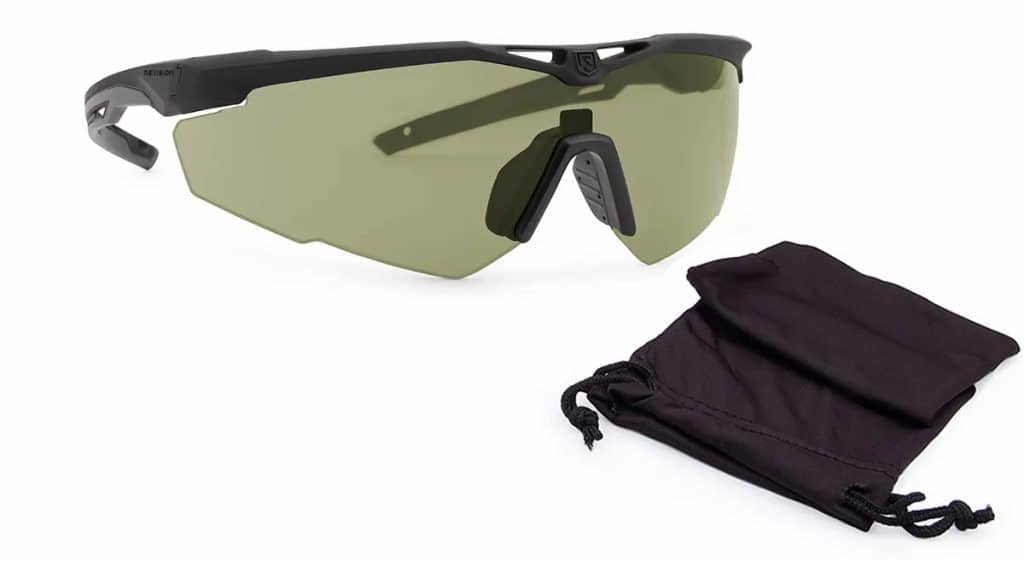
A Versatile System
Revision’s I-Vis lenses are currently available for the StingerHawk and SnowHawk (Clara and Umbra only) ballistic eyewear systems. Since we have the StingerHawk, I’ll focus on that one. We both noted that the StingerHawk frames are low-profile and comfortable.
Eyes and Ears! Like many shooters I know, I’ve often been tempted to shed my protective eyewear because it interfered with my hearing protection. I have not done that with the StingerHawks. No matter whether I use plugs or muffs, they have not gotten in the way. Comfort may be more subjective than impactive resistance, but it’s an important feature.

The nosepiece is a wide, textured piece of soft rubber that doesn’t slide down my nose. It’s also flexible, meaning it adjusts to my schnoz comfortably. Revision says the frames are comms-compatible, though we have not tested them for that. We currently aren’t quite as high-speed as we’d like.

A very nice feature is that the lenses may be purchased without the frames, allowing an easy switch of lens tint whenever necessary, without buying a whole new pair of glasses. Another nice touch is that Revision offers prescription lens inserts for those of us with less-than-perfect vision. I don’t have one of those yet, but it’s on the short list. Because I don’t own prescription safety glasses, I have to wear contact lenses to use shooting glasses. I may not always have contacts available, so it would be nice just to pick up my shooting glasses and have it all right there.
Plus, these would look way cooler than having those industrial glasses I sometimes have to wear over prescription glasses when I don’t have contacts in.
The Best Eye Protection for Shooting?
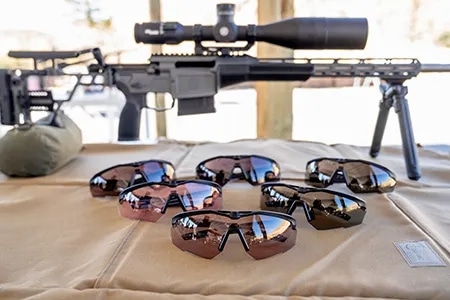
As the title suggests, we love our Revision I-Vis glasses. I really hadn’t grasped how much quality eye pro impacts my shooting and general awareness. I can confidently say that neither of us will be without our I-Vis glasses moving forward. We’ve already decided to add a set of Cano lenses for spring and summer here in the mountains. At least. We may get some Versos too.
I will definitely be acquiring a set of prescription inserts very soon – these things aren’t just the best eye protection for shooting. They’re damn good for all sorts of things, and not as shooting eyewear or other tasks requiring a ballistic rating. My teammate Sara reckons they’re about the best sunglasses for a photographer you can get; some other others in our Tribe use them for hunting eyewear, off-road eye pro, and in the case of their Speed Demons, just fashionable EDC sunglasses.
Honestly, I can’t recommend the I-Vis glasses highly enough. I’m no operator, far from it, but I do shoot quite a bit, and I’m very much looking forward to wearing these glasses when I go hunting in the fall. Deer have a knack for blending in, and I think these glasses will help me spot those elusive critters.
I’ll probably still have a crap ton of nonprescription shooting glasses lying around because that’s just how I am, but I can safely say that my Revision I-Vis glasses will be the ones on my face or in my range bag.
They really are that good.
Check out Revision’s high-tech tactical sunglasses and give them a try. I’m confident you’ll agree.
BUCK
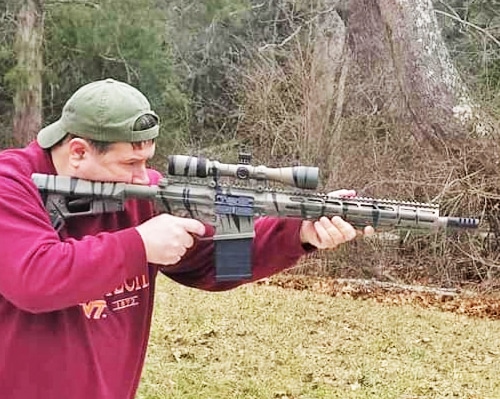
More in our Blog section.
Want more posts like this one? Subscribe to Guns & Tactics to receive email updates and special offers direct to your inbox!
– The views and opinions expressed on this web site are solely those of the original authors and contributors. These views and opinions do not necessarily represent those of Guns & Tactics, the administrative staff, and/or any/all contributors to this site.
– Affiliate Disclaimer: Guns and Tactics is reader/viewer supported. This post may contain affiliate links, and we may earn a small commission when you click on the links at no additional cost to you. As an Amazon Affiliate, we earn from qualifying purchases.












